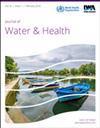菲律宾火山泥泉棘阿米巴属首次分离报道
IF 2.5
4区 环境科学与生态学
Q3 ENVIRONMENTAL SCIENCES
引用次数: 0
摘要
棘阿米巴被认为是普遍存在的高适应性动物。本研究旨在确定在火山泥泉等极端环境中存在自由生活的阿米巴,特别是棘阿米巴。采集泥泉地表水样品50份(34份),平地岩石样品16份(16份),进行处理和培养。培养14天后,32个(64%)培养皿显示阿米巴阳性生长。其中19个(55.8%)样品来自泥泉采集点,13个(81.2%)样品来自平岩源。将阳性样本的dna进行聚合酶链反应(PCR),用JDP1 5'GGCCCAGATCGTTTACCGTGAA-3 '和JDP2 5 ' ctcacaagctgctagggagtca -3 '引物对类似棘阿米巴的细胞进行聚合酶链反应。测序和BLAST分析结果显示,分离株与棘阿米巴属相似度达99%,鉴定出能在高温环境下存活的棘阿米巴属具有重要的公共卫生价值。环境中这种分离物的存在对健康有可怕的影响,建议重新审议水处理方案。在用于娱乐目的的环境源中检测到这类生物,为经常光顾这些地方的本地和国际游客提供了信息。这将减少未来潜在的感染。本文章由计算机程序翻译,如有差异,请以英文原文为准。
First report of Acanthamoebae spp. isolation from a volcanic mud spring in the Philippines
Abstract Acanthamoeba spp. is considered ubiquitous highly adaptive. The present study aims to establish the occurrence of free-living amoebae, particularly Acanthamoeba, to exist in extreme environments such as volcanic mud springs. Fifty surface water samples were collected from mud springs (34 samples), and flat rocks (16 samples) were collected, processed, and cultured. After 14 days of incubation, 32 (64%) plates showed positive amoebic growth. Nineteen (55.8%) of these plates came from the mud spring collection site, while 13 (81.2%) samples are from flat rock sources. DNAs from positive samples were made to react to polymerase chain reaction (PCR) using primer sets JDP1 5′GGCCCAGATCGTTTACCGTGAA-3′ and JDP2 5′TCTCACAAGCTGCTAGGGAGTCA-3′ for cells that resemble Acanthamoeba. Sequencing and basic local alignment search tool (BLAST) revealed a 99% similarity of isolates to Acanthamoeba spp. Identification of Acanthamoebae spp that can persist its survival in higher temperatures is important public health information. The existence of such isolates in the environment has dire health implications, which suggest revisitation of water treatment protocols. Detection of such organisms in environmental sources used for recreational purposes provides information to local and international tourists who frequent them. This will result in the mitigation of potential future infection.
求助全文
通过发布文献求助,成功后即可免费获取论文全文。
去求助
来源期刊

Journal of water and health
环境科学-环境科学
CiteScore
3.60
自引率
8.70%
发文量
110
审稿时长
18-36 weeks
期刊介绍:
Journal of Water and Health is a peer-reviewed journal devoted to the dissemination of information on the health implications and control of waterborne microorganisms and chemical substances in the broadest sense for developing and developed countries worldwide. This is to include microbial toxins, chemical quality and the aesthetic qualities of water.
 求助内容:
求助内容: 应助结果提醒方式:
应助结果提醒方式:


